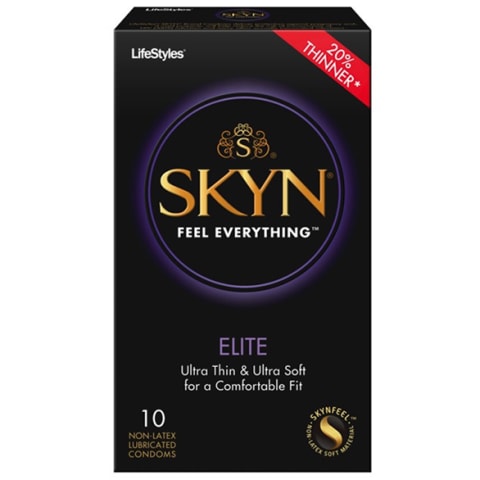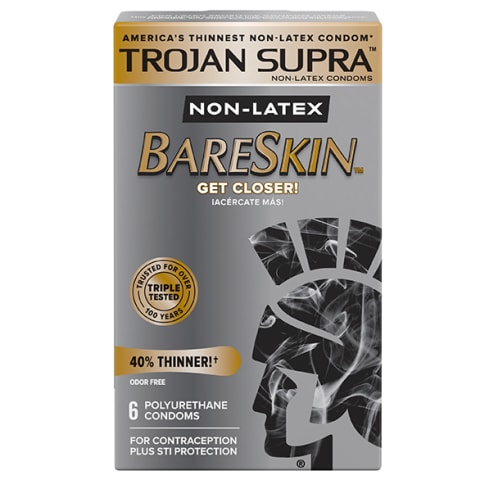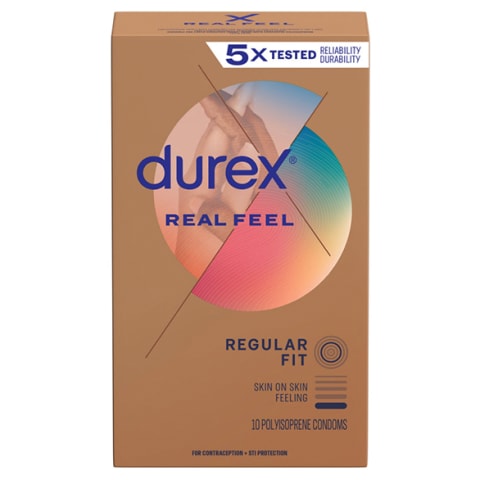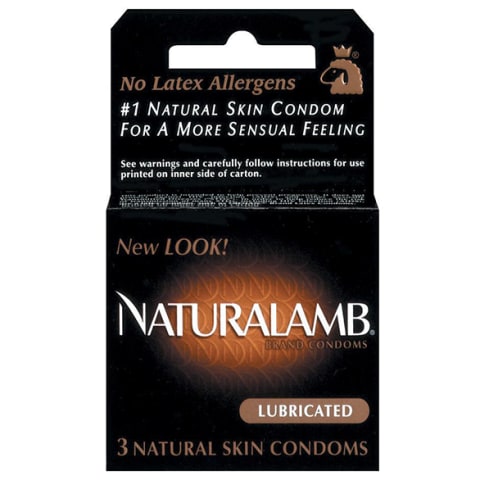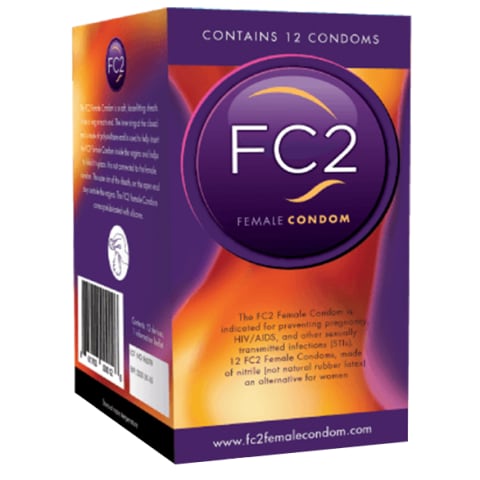If you’re unsure because you’ve never tried non-latex condom options, you’re in the right place! With the help of expert guidance, we’re breaking down what you need to know about these contraceptives, including the right lube to use and which condom is best, based on efficacy. Here are some common materials used to create non-latex condoms: To know if you’re allergic or sensitive to latex condoms, Doctor of Public Health Linsey Grove, DrPH, MPH, CPH, suggests getting a skin test from a dermatologist or allergist to find out. Sexologist and sex educator Goody Howard, MSW, MPH, says you can also test latex out on your own skin too: “Rub the latex on a part of your skin to see if you get a rash or some skin irritation.” A severe reaction can look like hives, redness, swelling, or itching. Pro-tip: Howard notes that you’ll likely notice a latex allergy through previous contact with gloves, rubber bands, shoes, and more. If you’re experiencing discomfort or allergy symptoms from what seems like the condom you’re using but don’t have problems with other latex items, she says to consider other culprits, such as the lubricant or spermicide on the condom. According to Howard, the main benefits of non-latex condoms are their strength and thinness. Because of their lack of latex, she says they won’t dry out your body and lubricant as rubber condoms may for some people. “They also don’t have that pungent rubber smell.” Non-latex condoms are also typically more smooth, often feeling velvety to the touch, shares Marla Renee Stewart, M.A., sexologist for Lovers sexual wellness brand and retailer. Plus, non-latex condoms may “adjust to your body temperature faster, making them feel more skin-like as well,” Grove tells mbg. It’s a hard no for oils though, says Jenni Skyler, Ph.D., LMFT, CST, sexologist and director of The Intimacy Institute for Sex & Relationship Therapy. There are mixed reports on whether non-latex condoms can support oil, she notes. For latex condoms, research shows that just 60 seconds of exposure to oil can degrade the quality of latex2, making it likelier to tear during sex. Because polyisoprene and latex are so chemically similar, these non-latex condoms can also experience latex erosion from mineral, coconut, or olive oils. “I prefer to steer clear of oil-based lubes with any condoms,” she says. There may be at least a few exceptions to that rule though. Polyurethane condoms are made out of plastic materials, so your favorite oil-based lube probably won’t corrode them. Howard and Stewart both say lambskin condoms are also likely fine to use with oil-based lubes. Also known as natural membrane condoms, lambskin condoms are made from the intestines of a lamb, Howard explains, so it’s biological material. “If anything,” she says, “oil would only moisturize a lambskin condom.” If you’re ever unsure, check the condom manufacturer’s instructions or website. Or go with Skyler’s advice and err on the side of caution—avoid the oil-based lubes and stick to water- or silicone-based options. Skyn condoms are also Goody’s favorite brand because of how stretchy yet thin they are. (The Elite version is 20% thinner than the original!) Plus, she says, you can feel the warmth from your partner’s body through the condom. “I’ve never had one break on me, and I’ve been using them for [more than] a decade.” Looking for something larger? Stewart recommends the Skyn Large, which goes up to 8.62 inches in length and 2.12 inches in girth. Skyn Elite 10 Pack, $11.50 Trojan Bareskin Supra™ 6 Pack, $7 Durex RealFeel 10 Pack, $15 Trojan Naturalamb™ 3 Pack, $10 FC2 Internal Condom® Unique Pull 3 Pack, $8 If you’re new to non-latex condoms, have fun with the process—and if something doesn’t work, try another option.



